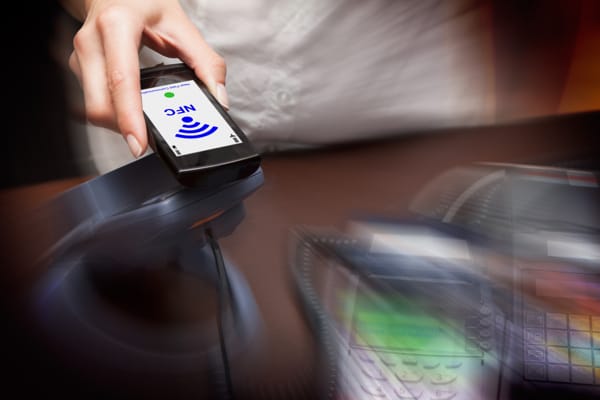Britain is the contactless capital of Europe

Citizens of the UK have a reason to be proud when it comes to contactless payments. It seems that London has become the financial tech capital of Europe. Even though Brits have a somewhat old-fashioned reputation internationally (bowler hats, London buses and outdated accents, anyone?), it seems that as far as consumers are concerned, we’re pretty much leading the way when it comes to adopting the latest tech with more people reaching for plastic when traditionally they might have used cash.
The contactless capital
It has been widely reported that Brits are more likely to own smartphones than most other European countries, and use them to shop, manage finances, and much more. Now we’ve become the most forward-looking market for contactless payments with more than 53 million contactless transactions in March 2015. Part of the reason is no doubt that there are more than 50 million contactless cards in circulation -that’s more than twice the figure in France and almost one for every person living in the country.
According to the UK Cards Association’s most recent contactless statistics (unfortunately not yet available for 2015), as of December 2014:
- 58 m contactless cards have been issued that can be used to make a contactless payment. These cards are split between debit (36.9m) and credit / charge cards (21.2m). This is an increase of 3.8% on the previous month and 52.2% over the year.
- £380.8m was spent in the UK in December using a contactless card. This is an increase of 25.8% on the previous month and 330.8% over the year. The value is split between debit (£343.6m) and credit / charge cards (£37.2m).
- 46.1m contactless transactions were made this month. This is an increase of 15.6% on the previous month and 255.1% over the year. The volume is split between debit (£40.5m) and credit / charge cards (£5.6m).
215,380 bank-owned terminals are available in the UK where contactless cardholders can make a contactless transaction. This is an increase of 3.3% on the previous month and 22.7% over the year. - On average, each contactless transaction is for £8.26. This is split £8.48 on a debit card and £6.68 on a credit / charge card.
- On average, each bank-owned terminal has processed 191 transactions and taken £1,768.
These figures are no surprise – the British have also been long accustomed to using various forms of contactless payments for purchases and travel (e.g. the London Underground), and we’ve had debit cards with the capability for years (Barclays and Barclaycard have been providing contactless debit and credit cards since 2007). And almost one in three (30.1%) card transactions in London last year were contactless, according to Barclaycard.
It’s perhaps a surprise to some that the US lags behind – Apple Pay may have originated in the US, but the biggest economy in the world still hasn’t even adopted chip-and-pin payments. The majority of Americans are still using old-fashioned swipe cards. But the chips embedded into all credit and debit cards in Europe and has cut card fraud by more than 65 percent in the last decade.
However, despite our keenness to adopt contactless, last year the UK lagged behind many other European countries in terms of feeling comfortable with contactless payments, as the chart below indicated. Surprisingly, Romanians appear to be the most comfortable with the burgeoning tech…

Nevertheless, now that Apple Pay has become “a thing”, the fact that Apple has chosen the UK as the second country for its international rollout reflects the fact that Brits are seen as early adopters, and ready to embrace new technology. Even though it’s early days for Apple Pay, it’s pretty exciting knowing that in a couple of years the notion of using cold hard cash could finally be a thing of the past.
Here’s another great stat, courtesy of Statista.com, it seems that of the various mobile and contactless payments, it’s the young generation who are heavy users, whether it’s using a mobile app or tapping to pay with a phone.
If you want to read more about Ewan’s thoughts on Apple Pay, check out his recent article.






